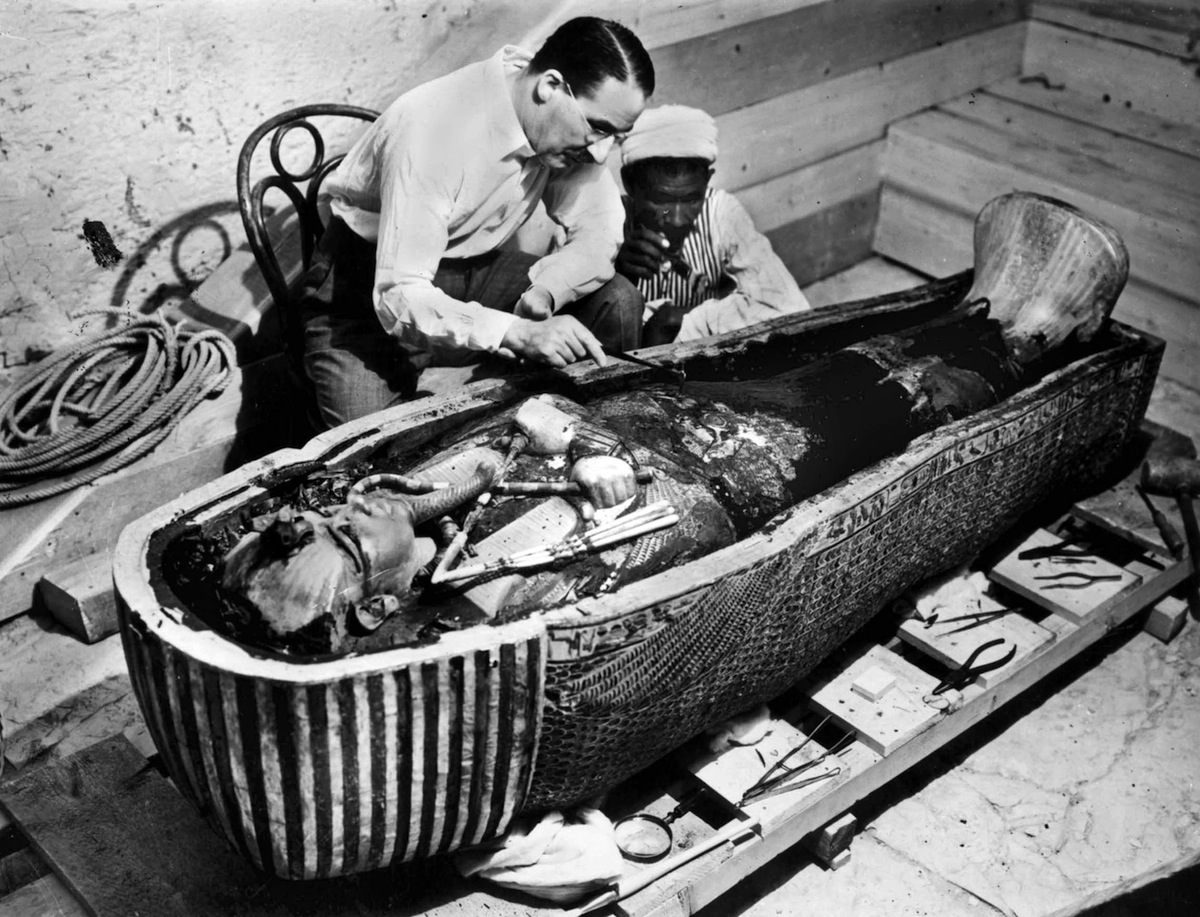
To those who entered King Tut’s tomb — the first people to see inside since the teenaged pharaoh was buried there 3,300 years earlier — the experience inspired either awe or terror.
For British archaeologist Howard Carter, it was a career-defining discovery and the culmination of years of searching for the lost tomb. The hunt had seemed hopeless after months spent sifting through 70,000 tons of sand and gravel, according to Carter’s obituary in the New York Times. But when a workman found a step cut into a chunk of bedrock buried in the sand, the stairway it revealed led to the door of the tomb. Carter opened it on this day, Nov. 26, in 1922.
Tutankhamen was only about 8 or 9 when he came to power in 1332 BC. His decade-long rule was relatively unremarkable in Egyptian history; the discovery of his tomb was significant instead because it was the first such tomb to be found almost entirely intact.
Inside, according to a 1922 New York Times account, stood two life-size statues of the pharaoh wearing solid gold sandals and gold crowns adorned with stylized cobras. The cobras gave local workmen pause, especially after a grim omen later that day. According to the Times, Carter kept a canary as a pet, but that night it was killed by a snake. “The incident made an impression on the native staff, who regard it as a warning from the spirit of the departed King against further intrusion on the privacy of his tomb,” the Times noted.
Newspapers began reporting the legend of a “Pharoah’s Curse,” which would mean death for anyone who disturbed the ancient rulers’ slumber. The wealthy Brit who financed Carter’s excavation, and who joined him inside the tomb on this day 92 years ago, was dead by April — although, as the Times noted, “he had been in bad health.” Eleven other people in the group that entered the tomb with Carter were dead within seven years.
In his 1939 obituary, the Times points out that Carter, despite being fairly sickly himself, lived long enough to be “the best refutation of the curse.” He may have been too dazzled by the tomb’s gilded treasures to give superstition a second thought — after all, Tut was not, in fact, buried in his jammies. Instead, as TIME reported when his coffin was finally opened three years after the tomb was, he wore golden sandals, a gold-inlaid royal apron, a golden star in the place where his heart had been and “innumerable amulets of beauty and ghostly merit, as well as two swords, jewel-studded.”
Over his head and shoulders, Tut wore his now-iconic solid-gold death mask, inlaid with lapis lazuli and precious stones. On his forehead were representations of the deities tasked with protecting him in death: one in the form of a vulture, the other a cobra meant to spit poison at his enemies.
The cobra may have taken revenge on Carter’s canary, but it did little to keep the archaeologist from disturbing the pharaoh’s eternal rest. After Carter opened Tut’s sarcophagus, he and his workers “wrenched the golden mask away from the royal mummy,” the BBC reported — and decapitated the Boy King in the process.
Read TIME’s 1934 report on rumors that a prominent Egyptologist had fallen prey to King Tut’s curse: A Curse on a Curse
More Must-Reads from TIME
- Cybersecurity Experts Are Sounding the Alarm on DOGE
- Meet the 2025 Women of the Year
- The Harsh Truth About Disability Inclusion
- Why Do More Young Adults Have Cancer?
- Colman Domingo Leads With Radical Love
- How to Get Better at Doing Things Alone
- Michelle Zauner Stares Down the Darkness
Contact us at letters@time.com